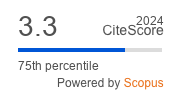Article | Open Access
Educational Success Despite School? From Cultural Hegemony to a Post‐Inclusive School
| Views: | 2427 | | | Downloads: | 2688 |
Abstract: This article explores how a differential thinking has arisen between “us” (locals, natives) and “them” (migrants) in German‐speaking areas, how in this context a canned Rezeptwissen (recipe knowledge) has established itself and how there has been a normalisation of cultural hegemony in the context of education. This binary thinking has also taken hold stepwise within the concepts of school development and educational programmes. It has contributed significantly to the construction of an educational normality that has retained its efficacy up to the present. Along with the structural barriers of the educational system, the well‐rehearsed and traditional conceptions of normality serve to restrict and limit the educational prospects and future perspectives of youth who are deemed to stem from a migration background. These prospects and perspectives for the future have a negative impact on their educational goals and professional‐vocational orientations. Our research also shows that ever more youths and young adults are confronting and grappling with this ethnic‐nationally oriented understanding of education and seeking to find other pathways and detours to move on ahead and develop appropriate conceptions of education and vocational orientations for themselves. The article explores the need for a “post‐inclusive” school and “post‐inclusive” understanding of education, which overcome the well‐rehearsed and historically shaped conceptions of normality in the context of education, opening up new options for action and experience for the young people involved.
Keywords: cultural hegemony; education; post‐inclusive school; post‐migration; young people
Published:
© Erol Yildiz, Florian Ohnmacht. This is an open access article distributed under the terms of the Creative Commons Attribution 4.0 license (http://creativecommons.org/licenses/by/4.0), which permits any use, distribution, and reproduction of the work without further permission provided the original author(s) and source are credited.


